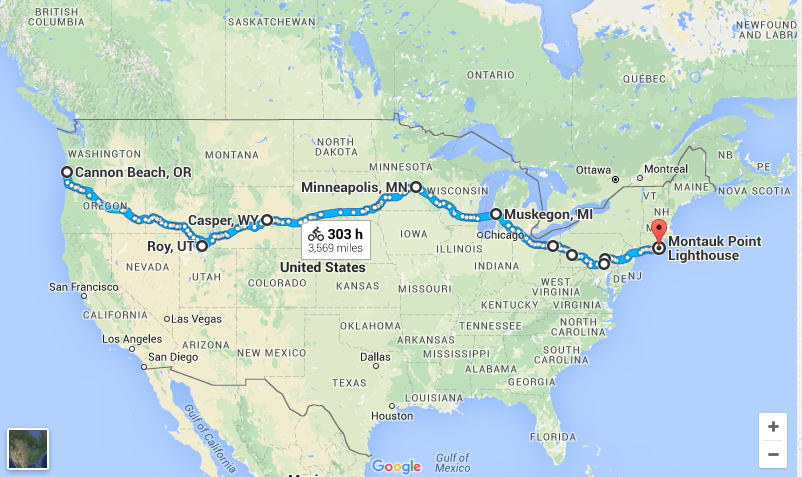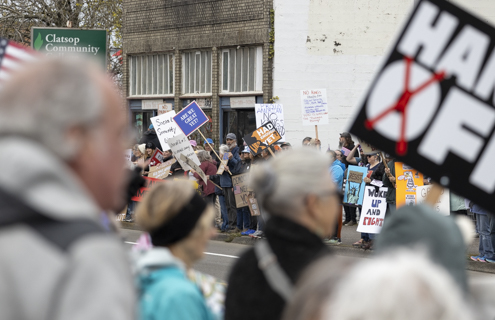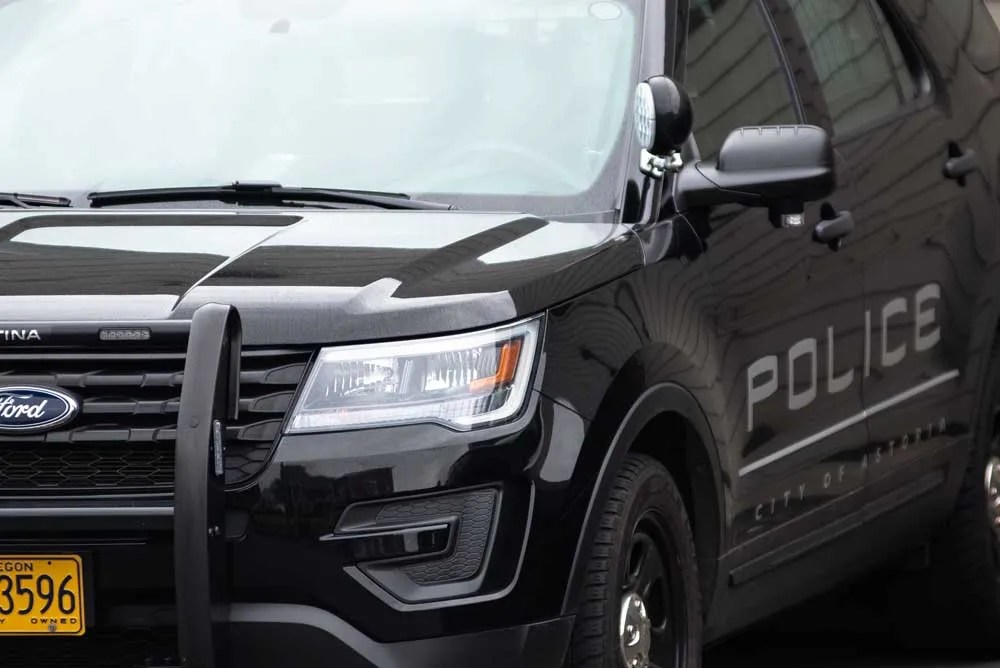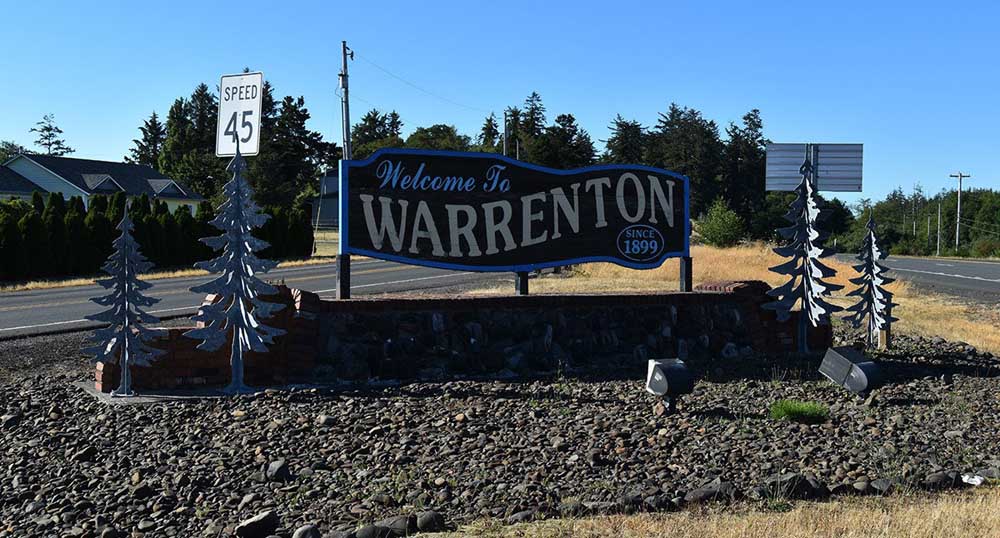Cannon Beach is launchpad for Bob Quick’s journey
Published 8:00 pm Monday, June 20, 2016

- The route Bob Quick and Troy Easton will follow on their ride.
What a way to make a friend — in the back of an ambulance as you’re suffering cardiac failure.
Landscaper Bob Quick of Roy, Utah — just west of Ogden — led an unhealthy lifestyle. He paid the price in 2004.
“I could tell he was dying as soon as I saw him, for sure,” paramedic Troy Easton said. “Complete cardiac failure, ashen, blood pressure, 80 over nothing, he was real anxious, you know you’re dying. He said, ‘Please do everything you can to save my life.’”
Easton, first on the scene, said Quick had no pulse and was not breathing when they “let him have it,” shocking him with 360 joules from a defibrillator.
For 3 1/2 minutes, Quick’s life hung in the balance.
As Quick, now 55, entered the “white light,” he recounted last week in Cannon Beach, “I said, ‘I’ll do whatever I can to change,’ and I woke up three days later.”
“I’m not sure whether I had a choice to save him or not, but he wouldn’t have had a very good lifestyle,” Easton said. “Not very many people come back.”
Quick’s survival was a result of Easton’s quick action and subsequent medical treatment — stents, bypass surgery, and multiple cardiac procedures, according to Easton. Quick suffered so much damage — the lower third of his heart was dead — he required a pacemaker defibrillator for survival.
Less than a decade later, in 2013, Quick had built himself into shape and proposed a unique thank you for the emergency responders who came to his assistance. He conceived a plan to bicycle from coast to coast, the first man to embark on a transcontinental ride with 16 heart stents and a defibrillator. Easton and his wife, Marla, owners of Easton Health and Safety Solutions in Ogden, sponsored the ride from San Diego, California, to St. Augustine, Florida.
The 91-day journey went through Southern California’s Imperial Valley, where temperatures reached 114 degrees on the ride. Quick and his son, Conrad, rode at night when necessary,
“It was an appreciation ride and thank you to public safety for their response,” Easton said. “Bob’s job was to go shake hands and kiss babies.”
“Say hello to your hometown heroes, because that’s what they are,” Quick said. “The ones that never hear a thank you.”
When they landed back in Salt Lake City, they were greeted by firefighters and emergency personnel lined on the runway in a V-formation.
Quick, along with the Eastons and their two daughters, arrived June 7 in Cannon Beach via RV to launch the first leg of Quick’s second transcontinental journey, a 3,400-mile trek from Cannon Beach to Fire Island, New York.
This time, Troy Easton will pedal alongside Quick.
“Being the first paramedic to save him, I said, ‘I’ll go with you,’” Easton, 48, said. “I’ve got to watch him. He’s a go-getter, he’s done amazing things but I’ve got to reel him back. It won’t be much of an journey if we kill him.”
Quick had never been to Oregon, and originally suggested San Francisco as their launch point.
Easton vetoed that. “Bob wanted to take me through Nevada,” he said. “We were going to go from San Francisco to Nevada from Reno to Salt Lake — 512 miles of sheer hell. Why would you do that? You could cook an egg on the hood of your car.”
Easton’s daughters had recently vacationed in Cannon Beach, and loved the city and its scenic beauty.
He successfully pitched the idea to Quick: “We’re going to Haystack, Jack!”
Quick agreed, and began preparation for the trip, which would conclude 3,400 miles away.
He got a “tune-up” from medical personnel, including another stent, implanted through the groin up the femoral artery. “The key was getting him ready internally, externally, mind for the next ride,” Easton said.
The Eastons used the same tests on Quick they use for performance testing of fire and police personnel.
This ride expands the original goals of the 2013 trip. Along with thank yous to emergency services, Quick and his team hope to raise awareness of physical fitness and health, and they are raising funds to provide iPads to schools that serve autistic children.
Quick’s grandson, Bruce, 6, is autistic.
Quick and Easton, who took off June 1, were headed for Salem and then to Bend.
The northern route promises cooler weather and scenic beauty, along with the opportunity to participate in a three-day event planned for St. Jude Medical in Minneapolis. They’ll then take 250 miles of trail from St. Paul to Milwaukee.
With food, tents, sleeping bags and stoves, “We’ve got everything we need,” Easton said.
They plan to travel about 50 miles a day. To prevent diarrhea or cramps, they eat glutamates and protein — to maintain their energy, they’ll need about 8,700 calories per day. “We’ve been training hard the last little while,” Easton said. “But once that heart rate goes up over your threshold and that lactic acid is rocking and you’ve still got 7 miles up that hill still, that’s so heartbreaking when you’re riding a 140-pound bike. I’m used to a 17-pound bike.”
This should be a wakeup call for all of us — you don’t have to suffer a heart attack to participate in life, the “full catastrophe.” Your crowning moment is right now.
The journey offers inspiration to “seize the day” — before the day seizes you.
R.J. Marx is The Daily Astorian’s South County reporter and editor of the Seaside Signal and Cannon Beach Gazette.





